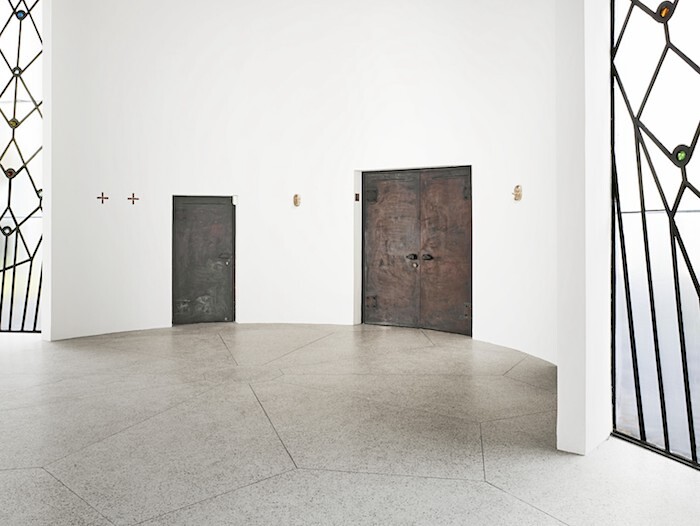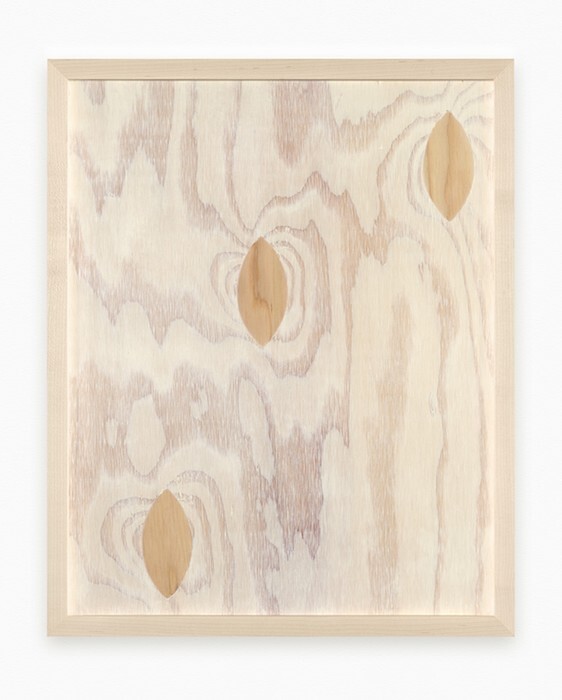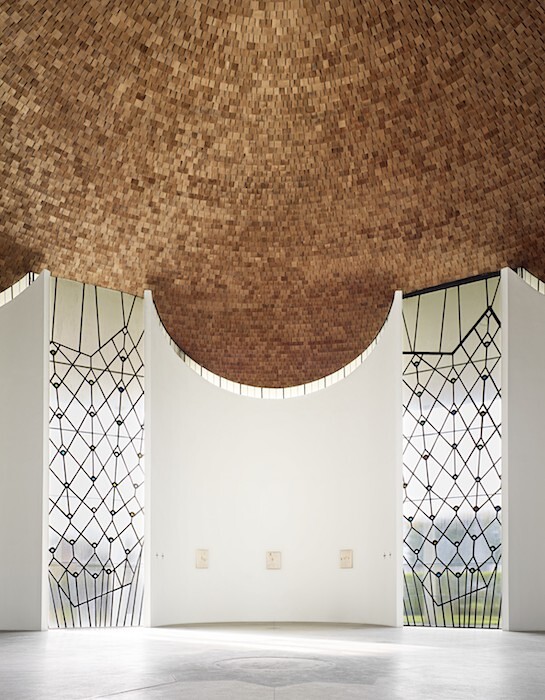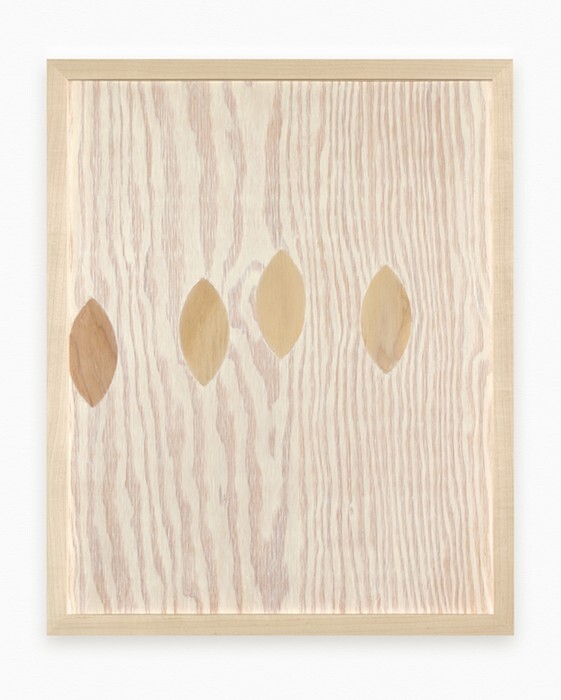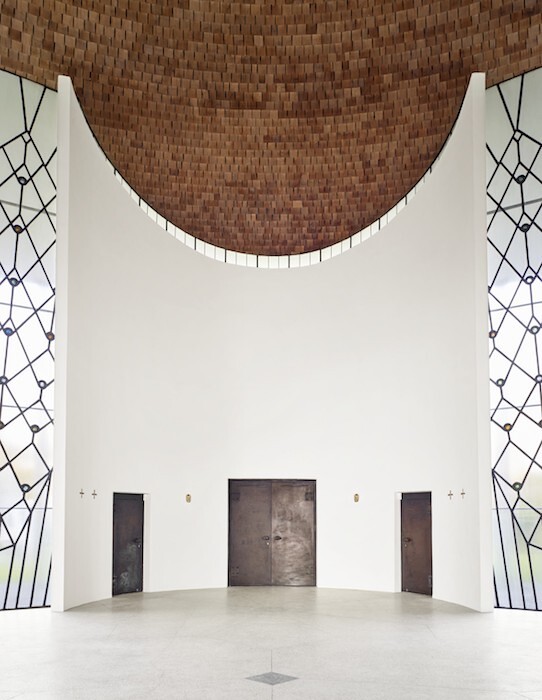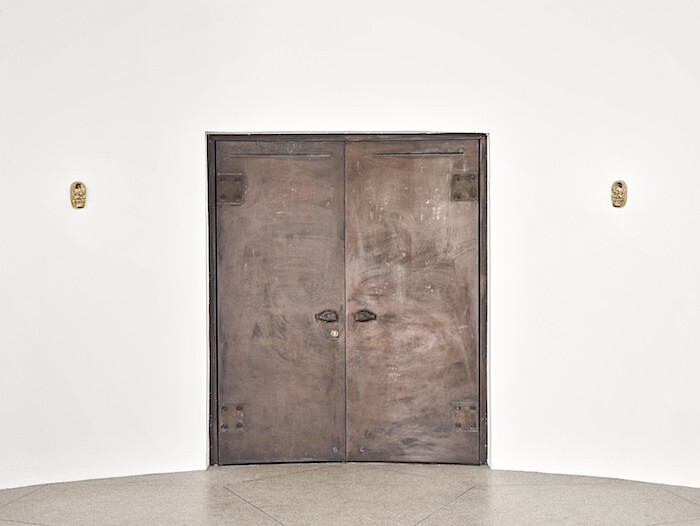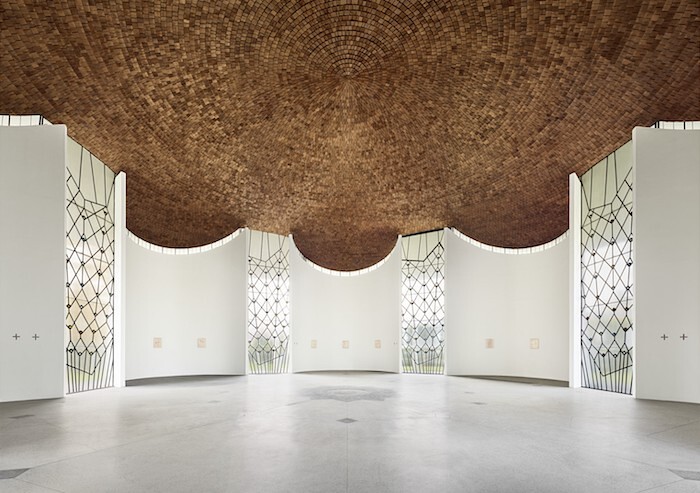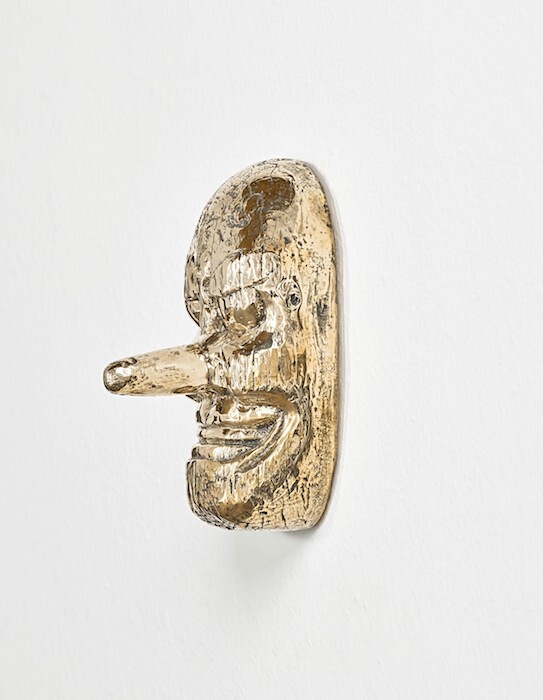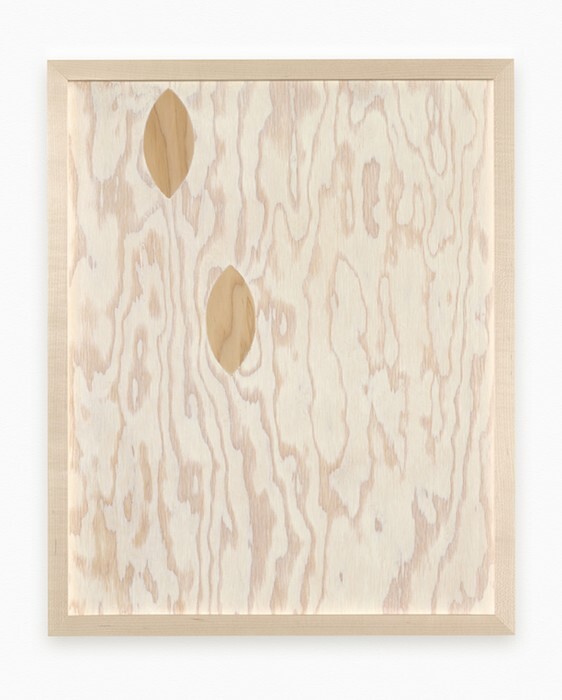A church, before being appropriated for something beyond its original purpose, needs to undergo a ritual called “profanation.” The procedure is a sort of reverse engineering of the initial consecration. What once belonged to a god is handed back to human life. “And if ‘to consecrate’ (sacrare) was the term that indicated the removal of things from the human law, ‘to profane’ meant, conversely, to return them to the free use of men,” writes Giorgio Agamben.1
In the early 1950s, architect Dominikus Böhm was asked to build a church in the village of Kalscheuren, on the outskirts of Cologne. He let his son, Gottfried Böhm, actualize his preliminary design. (The younger Böhm would later become famous for his sculptural, crystal-shaped churches, and would be the first German architect to receive the Pritzker prize.) In Kalscheuren, slim pillars around the outside of a circular hall hold a flat, mushroom-shaped roof that makes the building look like a concrete model of a Mongolian yurt. Some consider it one of the most important postwar churches in the Rhineland. Yet, the fame of the monument did not prevent Catholicism’s decline, and in 2006, on May 25, 50 years after its consecration, the last service took place. Finding new users for the building proved difficult. In notices of sale it figured as a “loft,” as if to hide its history as a church and an architectural landmark. After acquiring the space in 2010, gallerist Rafael Jablonka involved Gottfried Böhm in its renovation. In November of the same year, it was inaugurated with a concert by Philip Glass, who performed his composition Metamorphosis (1989).
Two years after the end of World War II, Man Ray traveled back to Paris to look after his former studio and to bring back his belongings to Los Angeles. À la lumière lunaire is one of the works that he made during his short stay in California before finally returning to Paris in 1951. The wavy grain of darkened plywood—in which a circular intarsia of a brighter wood is embedded—gives the illusion of a full moon in a melodramatic, cloudy sky. Adding to the image’s overall melancholic attitude is its title, written at the bottom of the panel in a childish handwriting, with the last digit of the year tilted to form an ∞, as if 194∞ was ready to enter infinity.
Sherrie Levine appropriates Man Ray’s piece in her “15 White Moonlight Paintings” at the Böhm Chapel. She takes his title and applies it to a series of the well-known “knot paintings” she has been producing since 1985. These are plywood panels whose knots are painted over, leaving a pattern of colored spots on wood, of which the Jablonka exhibition presents a uniformly hued collection. Ray figures as a recurrent reference in her work, and this show is not even the first time that she has connected her “not”-paintings to him. Early last year she exhibited a series of similar plywood panels under the title “Yellow Moonlight after Man Ray” at David Zwirner, New York.
Levine applies aspects of Ray’s work to her own, but the appropriation remains incomplete. Appropriate to the romantic motif, the series leaves it to the critic or the spectator to complete what has been left fragmentary. Did she turn the moon into a knot, or does the knot figure as moon? Is the title just a name, or does it convert the image?
For the task of completing unfinished appropriations, the former church is a well-suited venue. In each of the six conchs of the building (except the entry), three of the paintings are displayed. The shape of the building, emptied of seats and the altar, produces a strange visual effect. From the inside it appears much bigger than from the outside; the dark timber shingles of the ceiling make the space feel like a cave, and the cavities of the conchs make the paintings appear to be more distant than they are. Next to the door, two works of a different series address leaving visitors with a grim grin. As if to remind us of the holy powers once present, Levine placed two demon masks—each titled Tengu Element, 2015—on either sides of the door. Tengu refers back to ancient Asian tales. For the Chinese, tengu figure as heavenly dogs, man-eating harbingers of war. The Japanese reimagined their appearance, adding a long nose. Some are considered good demons, others evil. Today, tengu depictions are common in Japanese folk mythologies.
I do not know exactly which mask Sherrie Levine’s exactly refers to, though it’s most likely an ancient one, because the texture of the original wood remains visible in the bronze cast. Whatever the small gods are meant to say, they certainly signal that what’s taken place is not a profanation. Agamben marks the difference between secularization and profanation: ”Secularization is a form of repression. It leaves intact the forces it deals with by simply moving them from one place to another (…) Profanation, however, neutralizes what it profanes. Once profaned, that which was unavailable and separate, loses its aura and is returned to use. Both are political operations.”2 With Levine’s appropriation, the institutional forces at work are by no means neutralized. They remain in place, folded, doubled, and multiplied in a structural setting that Roland Barthes would have called mythological. As much as the moon over California keeps shining for Man Ray and again in Levine’s knot paintings, the secularized powers of the religious cult are transferred to the exhibition space, and the appropriation misses the liberating aspects of a profanation.
Giorgio Agamben, Profanations (New York: Zone Books, 2007), 73.
Ibid, 77.

